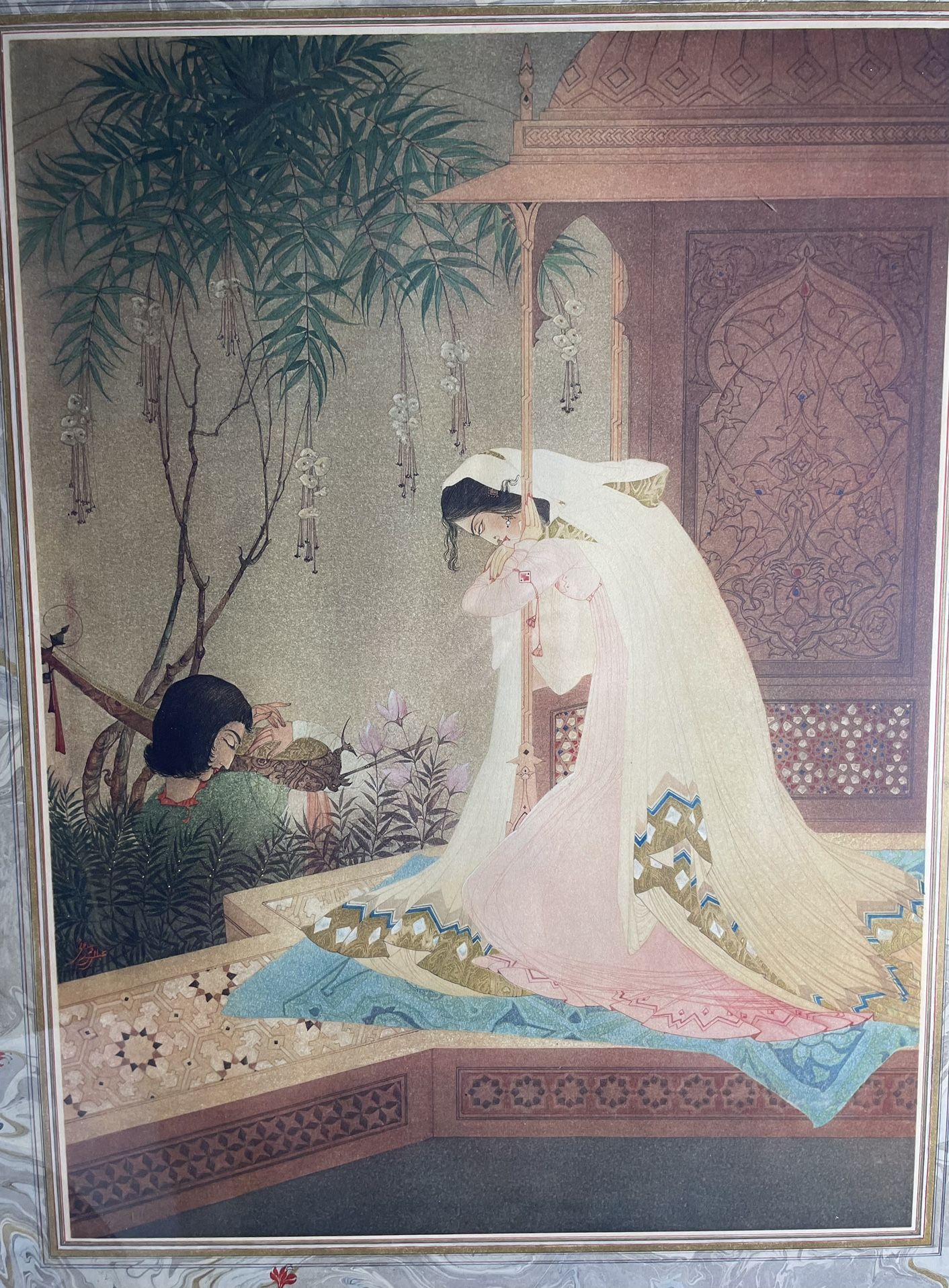Take action
$225
Abdur Rahman Chughtai, For a Song - Collotype Pakistani Artist
Last updated about 2 years ago in Thousand Oaks, CA
Listed in categories:
Sold by
Get a second opinion
Chat securely on the app

Additional images
Description
Abdur Rahman Chughtai, For a Song, 1937. Signed in Urdu on lower left. Rare collotype. Mint condition. Collotype reproduction hand touched with gold and pencil. Framed in mid-century modern bamboo with glass. Not pasted down. Considered the most distinguished Pakistani artist of the 20th Century, Chughtai's work comes to auction infrequently. Past auctions - see Sotheby's - of this print go from $3000-$5000. Size: 30" High x 24" Wide - inches Artist Bio: Probably the most distinguished Pakistani artist of the 20th century, Chughtai looked at the complex and varied history of South Asia, to create a modern rendition of archaic fables. His work is beautifully nostalgic and thus shares some of the longevity of the tales it recounts. After partition of the subcontinent he came to be known as the National artist of Pakistan. In 1911 Abdur Rahman Chughtai joined Mayo School of Art (now known as the National College of Arts, Lahore) where he was taught by Samarendranath Gupta, a pupil of Abanindranath Tagore. Tagore was seen as the founder of the Calcutta based, Bengal School of art. The tendency to group him together with the Bengal school of painters was contested by the artist, who stated that contrary to Bengal art, which "favored gods and goddesses and was full of pessimism and gloom, ... his art was radically different because it inculcated hope and faith in life." Chughtai had a very distinctive style, incorporating the art nouveau, Indo-Persian miniature technique and Indian folklore. Hailing from a family of artisans and craftsmen, Chughtai used only the finest materials for his work, and so with each drawing or painting he created a leaf of quality and importance - a homage to the Mughal and Persian miniature traditions he was so heavily influenced by. The artist chose to paint Mughal, Iranian, Hindu, Punjabi, Kashmiri and Brahman subjects and later expanded to incorporate a 'pan-Persianism'.
Details
Condition
Used (normal wear)
Size
Medium (up to 36 in)
Style
Realism
Medium
Colloype reproduction
Item location map
Map is approximate to keep seller’s location private.